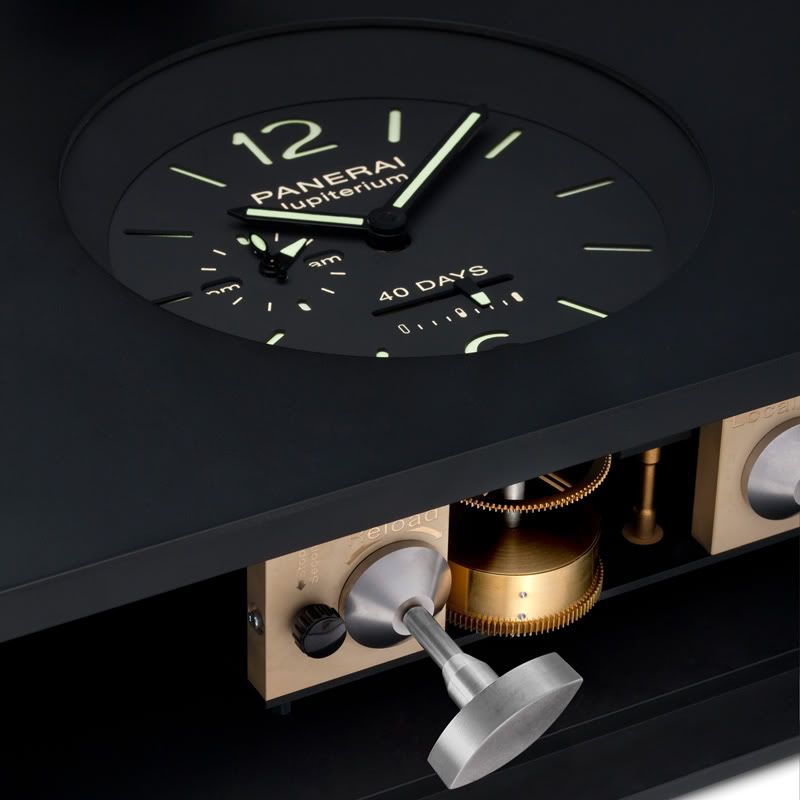New Horological Work of Art by Officine Panerai
OP have really outdone themselves this time (no pun intended), with a 40-day power reserve (that's more than 1 month in lay terms)! Last week CEO of Officine Panerai, Angelo Bonati, opened the Galileo exhibition at the Nobel Museum in Stockholm, Sweden. The press covered the special occasion in the Swedish capital on the very same day as the Nobel prize in literature went to German writer Herta Müller. Mr Bonati also announced a limited edition of a model offering a special Equation of Time. The impressive exhibition contained several original telescopes, including 2 surviving models made by Galileo, astrological drawings and vintage Panerai watches, celebrating the historical 1609 introduction of Galileo’s landmark invention – the instrument that changed the perception of the world. Initially this exhibition was created by the Istituto e Museo delle Scienza in Florence –also the home town of Officine Panerai. The exhibition marked the 400th anniversary of Galileo´s first celestial discoveries and was a unique occasion to experience an all time treasure. Officine Panerai sponsored the event, and made a unique contribution with an extraordinary mechanical instrument, the Jupiterium. This was a watch that no Paneristi expected to see; not a tribute to WW2 Italian navy divers; no Luminor, Radiomir nor the long-awaited Mare Nostrum reintroduction. This was a mechanical instrument with a watch that not only showed time but had a manual-wound movement with a whopping 40-day power reserve (the ultimate lazy man's timepiece)! The instrument also featured a unique perpetual calendar that determined the exact date, day, month and year without any need for manual regulation, even in leap years. Issued in a strictly limited edition of three specimens, the Jupiterium comprised a square wooden base supporting a glass sphere holding the Earth and planets on titanium arms. The constellation of the zodiac is picked out in superluminova on the surface of the sphere, shown as they can be seen both of Earth´s hemispheres. Let's see if they translate this movement into a wristwatch!




OP have really outdone themselves this time (no pun intended), with a 40-day power reserve (that's more than 1 month in lay terms)! Last week CEO of Officine Panerai, Angelo Bonati, opened the Galileo exhibition at the Nobel Museum in Stockholm, Sweden. The press covered the special occasion in the Swedish capital on the very same day as the Nobel prize in literature went to German writer Herta Müller. Mr Bonati also announced a limited edition of a model offering a special Equation of Time. The impressive exhibition contained several original telescopes, including 2 surviving models made by Galileo, astrological drawings and vintage Panerai watches, celebrating the historical 1609 introduction of Galileo’s landmark invention – the instrument that changed the perception of the world. Initially this exhibition was created by the Istituto e Museo delle Scienza in Florence –also the home town of Officine Panerai. The exhibition marked the 400th anniversary of Galileo´s first celestial discoveries and was a unique occasion to experience an all time treasure. Officine Panerai sponsored the event, and made a unique contribution with an extraordinary mechanical instrument, the Jupiterium. This was a watch that no Paneristi expected to see; not a tribute to WW2 Italian navy divers; no Luminor, Radiomir nor the long-awaited Mare Nostrum reintroduction. This was a mechanical instrument with a watch that not only showed time but had a manual-wound movement with a whopping 40-day power reserve (the ultimate lazy man's timepiece)! The instrument also featured a unique perpetual calendar that determined the exact date, day, month and year without any need for manual regulation, even in leap years. Issued in a strictly limited edition of three specimens, the Jupiterium comprised a square wooden base supporting a glass sphere holding the Earth and planets on titanium arms. The constellation of the zodiac is picked out in superluminova on the surface of the sphere, shown as they can be seen both of Earth´s hemispheres. Let's see if they translate this movement into a wristwatch!










Comment